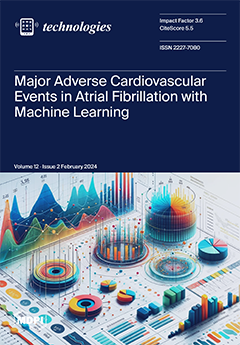Open AccessFeature PaperArticle
Angle Calculus-Based Thrust Force Determination on the Blades of a 10 kW Wind Turbine
by
José Rafael Dorrego-Portela, Adriana Eneida Ponce-Martínez, Eduardo Pérez-Chaltell, Jaime Peña-Antonio, Carlos Alberto Mateos-Mendoza, José Billerman Robles-Ocampo, Perla Yazmin Sevilla-Camacho, Marcos Aviles and Juvenal Rodríguez-Reséndiz
Cited by 2 | Viewed by 2890
Abstract
In this article, the behavior of the thrust force on the blades of a 10 kW wind turbine was obtained by considering the characteristic wind speed of the Isthmus of Tehuantepec. Analyzing mechanical forces is essential to efficiently and safely design the different
[...] Read more.
In this article, the behavior of the thrust force on the blades of a 10 kW wind turbine was obtained by considering the characteristic wind speed of the Isthmus of Tehuantepec. Analyzing mechanical forces is essential to efficiently and safely design the different elements that make up the wind turbine because the thrust forces are related to the location point and the blade rotation. For this reason, the thrust force generated in each of the three blades of a low-power wind turbine was analyzed. The angular position (
) of each blade varied from 0° to 120°, the blades were segmented (r), and different wind speeds were tested, such as cutting, design, average, and maximum. The results demonstrate that the thrust force increases proportionally with increasing wind speed and height, but it behaves differently on each blade segment and each angular position. This method determines the angular position and the exact blade segment where the smallest and the most considerable thrust force occurred. Blade 1, positioned at an angular position of 90°, is the blade most affected by the thrust force on P15. When the blade rotates 180°, the thrust force decreases by 9.09 N; this represents a 66.74% decrease. In addition, this study allows the designers to know the blade deflection caused by the thrust force. This information can be used to avoid collision with the tower. The thrust forces caused blade deflections of 10% to 13% concerning the rotor radius used in this study. These results guarantee the operation of the tested generator under their working conditions.
Full article
►▼
Show Figures





